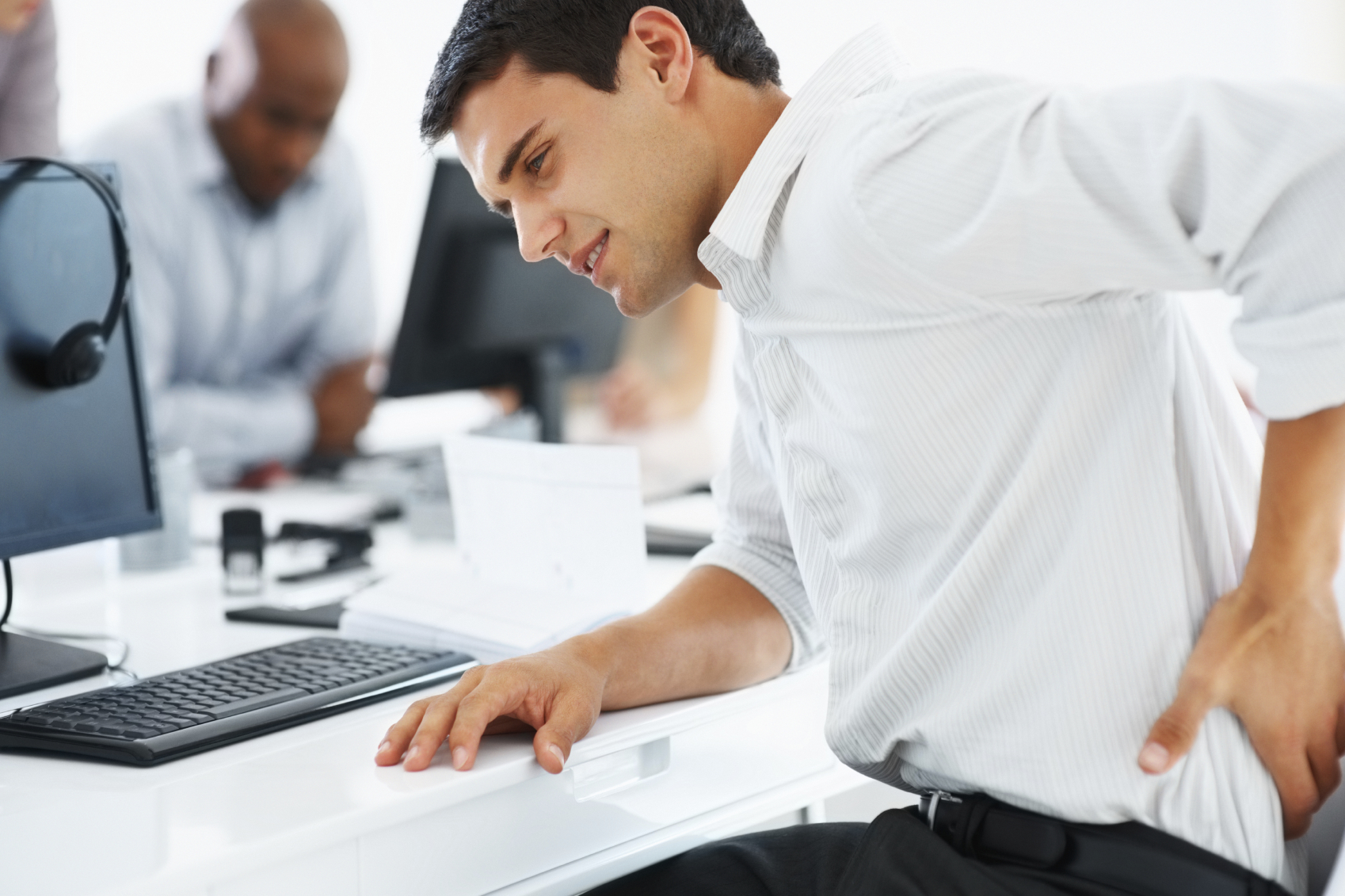
08 Feb Osteopaths Advice for Desk Workers – MUST READ!
With so much conflicting information and advice out there on how to sit at your desk, plus the plethora of office furniture catalogues, it is hard to even attempt to find the best place to start.
Statistics on back pain on work
It has been estimated that 32% of the great British population spend 10 hours, or more, every-single day, sitting at a desk. Then, when they have finished doing that, they go home and sit on another chair/sofa for a few more hours! So it’s easy to see why the lower back pain epidemic which sweeps the country year-round is only getting worse. Make sure you don’t become a statistic.
Common advice for sitting at a desk
In my opinion, the trick is to do what works for you! Don’t be forced into sitting how someone tells you to. Take all the information provided to you from whatever sources you can find and use what YOU feel lets you work comfortably. I’m sure that a lot of you will have been told all of the following key points to good desk posture (working from the feet upwards):
- Make sure your feet are flat on the floor. If this isn’t possible, when your chair is at the right height for your desk, get a foot rest.
- With the base of the seat flat (parallel to the floor), raise your back-rest so there is a 90 degree bend at your hips. Ensure your entire back is supported by the back rest (including the back of your shoulders).
- Make sure the arm rests allow a ‘L’ shape to be made by the upper arm and forearm. (The chair height should now be adjusted to allow you to tuck your chair under your desk.)
- With the keyboard and mouse mat 4 to 6 inches away from the edge of the desk, you should not be reaching forwards to use these, making sure you are not extending your wrists. (A gel wrist support is recommended if you do find that your wrists are still bent upwards when working.)
- The screen should then be raised/lowered so that your eye level is 2/3 of the way up the screen. If you work with more than one screen, try to have a main screen for editing/typing and ensure you chair swivels, NOT YOU!
So, those are the basics.
Recent research conflicts the advice given
Now consider this: a recent study has suggested that sitting at a desk in this position (above) still places the same amount of pressure on your intervertebral discs as being in a standing position. If you are slightly overweight, it could be more! In this study doctors used a positional MRI machine to view the discs, ligaments, bones and muscles in real-time as participants were moved through a range of different positions.
Sitting back in your chair reduces pressure on your discs. Is that possible all day long?
It was shown that having people in a reclining position with approximately 135 degrees from the tops of their thighs to the front of their abdomen more than halved the pressure of the discs and allowed the other structures to sit in an ‘easy-neutral’ position.
I know what you’re thinking. I agree! It’s impossible to sit/lie in a reclined position at work all day … I’d fall asleep too!
But there is a simple alternative. It involves a really quick change to the text highlighted in BOLD above. BUT, unfortunately, very few office chairs out there at the moment allow for this change. All you need to do is lower the base (the bit you sit on) on the chair down to increase this angle (between your abdomen and thighs). I recommend something more in the region of 120 degrees, to avoid you slipping forward off your chair after a while.
Osteopaths recommend the Wedge Cushion as the solution to your seating problems
If your chair doesn’t have this function, ask your HR department to either get you one, or see if they can buy you a wedged cushion to sit on to raise your hips. Failing that, I usually recommend people to break the golden rule of sitting back in your chair and actually slide forward in it to allow your thighs to drop down slightly. The deep hip flexor muscles will pull your lumbar spine forwards into its natural curve BUT you will need to concentrate more on keeping your shoulders back and stop yourself from slouching in your upper back.
See your Osteopath less! What our Osteopaths recommend for problems with desk posture
Problems with poor desk posture can set in really quickly. So, if you are having any issues or would like any further advice, come in to see one of our registered Osteopaths who would be happy to help and give you much more advice so that we can get you sitting correctly and spending less time coming to visit us!

No Comments